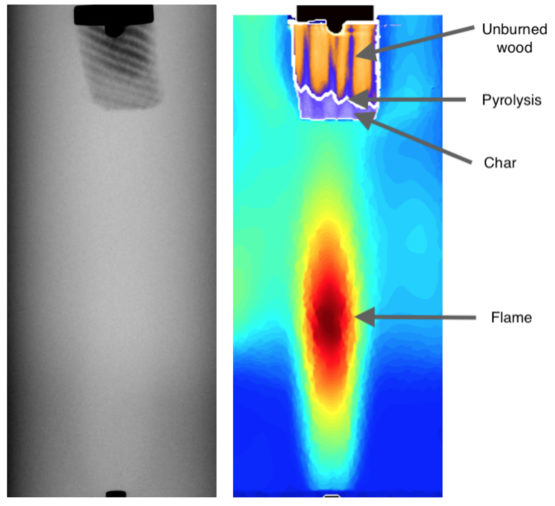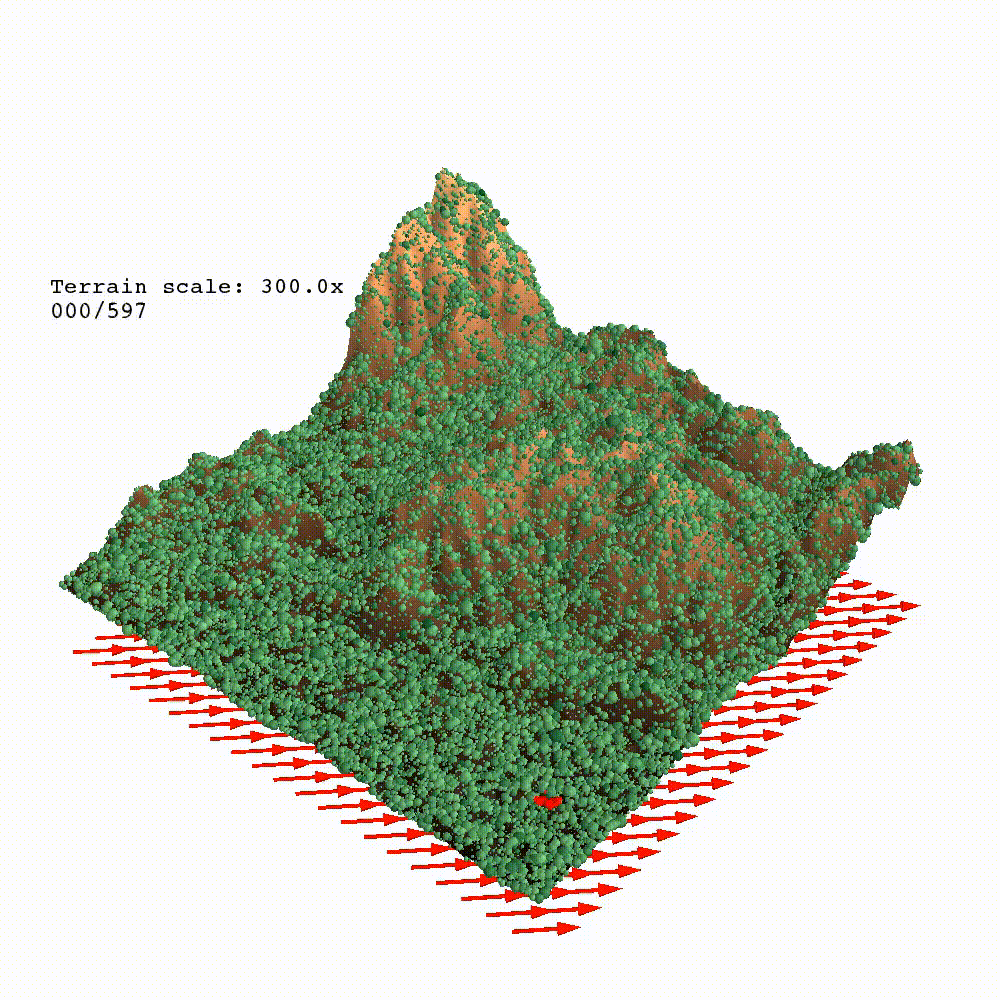Stanford researchers combine CAT scans and advanced computing to fight wildfires
Engineers at Stanford have used X-ray CT scans, more common in hospital labs, to study how wood catches fire. They’ve now turned that knowledge into a computer simulation to predict where fires will strike and spread.
As wildfires rage across much of the American West, researchers at Stanford have used CAT scanners, the same instruments used in medicine to peer inside the human body, to understand the process of smoldering – the state of burning without flame that often leads to fire. They then folded this deeper understanding of burning into computer models to predict where wildfires might strike next. These models could help firefighters allocate precious resources, reduce the loss of property and help save lives, the researchers say.

A piece of burning wood shown in X-ray (left) and CAT scan (right). (Image credit: Emeric Stephane Boigne)
“For wildfire risk assessment or if you’re a firefighter, what you need is an accurate prediction about how fast the local fuel – the trees and plants nearby – will burn. We’ve analyzed this fuel in a new way that allows us to do just that,” said Matthias Ihme, a professor of mechanical engineering and the senior author of the team’s recent paper in the Proceedings of the Combustion Institute.
Seeing inside the material
To the untrained eye, smoldering may appear benign, but it’s responsible for consuming more than half of the plant matter burned in wildfires. Smoldering logs can seethe for days and ignite anew, while glowing embers, carried aloft by hot updrafts, can transport wildfires to untouched areas in a flash.
“It’s hard to get an accurate understanding of the smoldering process by looking at the exterior of a log,” said Emeric Boigné, a graduate student in Ihme’s lab, who developed a new analysis method using advanced X-ray Computed Tomography (XCT) to study the smoldering process. XCT is able to penetrate inside dense materials – just as it does with the human body – to provide three-dimensional images of wood structures less than a millimeter in scale as they smolder and eventually catch fire.
“Emeric recognized the potential of this unconventional use of the CT scanner,” Ihme said. “You get inside the solid material and are able to measure the temperature of the surrounding flame in a new way.”
The researchers envision collecting wood samples from around the country, perhaps even around the world, analyzing them using XCT and compiling a detailed database of various fuels. Boigné has traveled to a couple of locations already to collect wood samples and different flammable materials.
“Our goal is to establish a database for burn rates and conversions of different materials,” Ihme said. “In theory, firefighters and others could send them to us from anywhere.”
The power of parallel
To create a predictive fire model, Stanford graduate student Matt Bonanni combined the gathered information about the flammability of various materials with land contour data extracted from the sort of mapping databases that make GPS possible. The model also includes weather data, like relative humidity in the air and wind patterns.

A simulation of how fire could possibly spread at the Stanford Dish based on a new model of wood smoldering developed by Stanford researchers using advanced computing and CAT scans. (Image credit: Matt Bonanni)
Bonanni’s simulations are on a forest-level scale, covering hundreds if not thousands of square miles. To simulate burning on that scale, he needed computer power – lots of it. So, he adopted an open-source framework called Tensor Flow that was originally developed for the processor-intensive task of machine learning. He is now working with Google Research to run these simulations on modern computing architecture, which allows them to operate much faster than ever before by completing many simulations simultaneously.
By multi-tasking, Bonanni’s algorithm can run through countless permutations in the variables to predict how different combinations alter how a fire might spread and which are most likely to occur. Models that once took a whole day to run now can be done in near-real-time.
“Once your model reaches that speed, then you can actually use it as a live model of fire burning and make strategic decisions in the firefighting process,” Bonanni said.
The model could one day be used to position firefighters where they’ll be most effective in containing a wildfire. Or, conversely, to extract them when conditions turn too dangerous. Likewise, the models might assist in fire abatement efforts like prescribed burns, helping firefighters keep their intentional fires contained.
Next up, the team plans to further refine their model and grow their databases. For example, Boigné would like to use the technique to study “zombie fires” that burn uncontrolled in the peat beneath Arctic permafrost. Bonanni also hopes to make his models even more powerful.
“We’ve been working on improving the fidelity of the model, adding more complex physics into it,” Bonanni says. “It’ll only get better.”
Other contributors include research engineer N. Robert Bennett and Assistant Professor Adam Wang, both at the Stanford University Department of Radiology, and Professor Khadijeh Mohri of the Institute for Combustion and Gas Dynamics, University of Duisburg-Essen.
This work was supported by the National Science Foundation, FM Global and the DFG Mercator Fellowship.
To read all stories about Stanford science, subscribe to the biweekly Stanford Science Digest.
